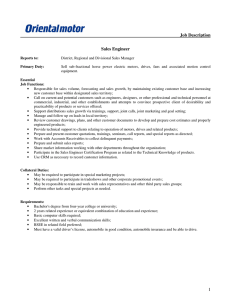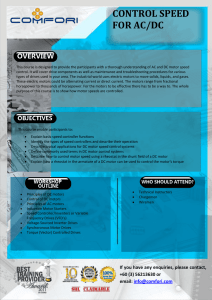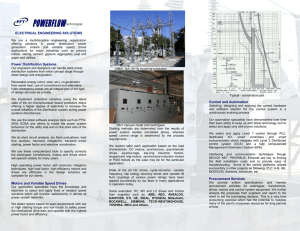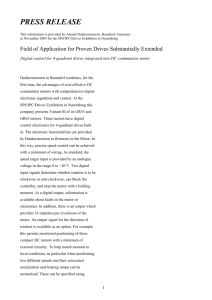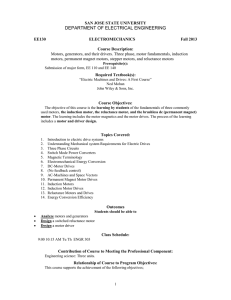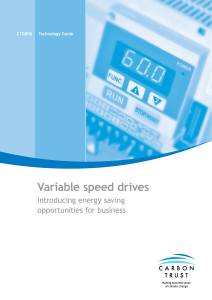Variable Speed Drives
advertisement
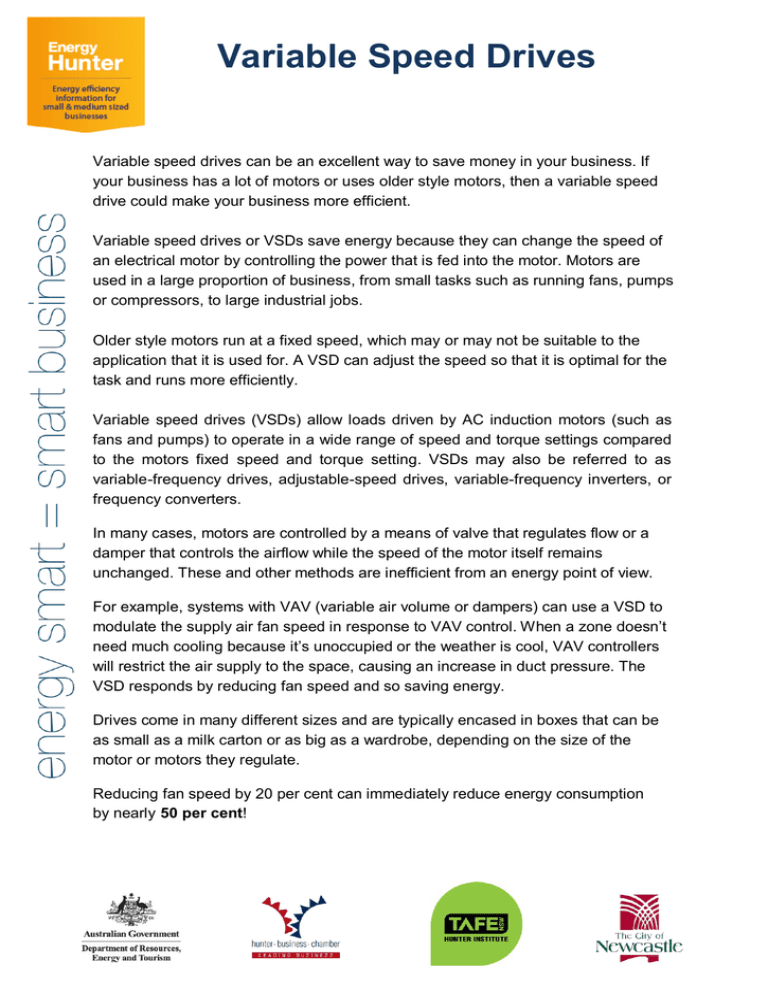
Variable Speed Drives Variable speed drives can be an excellent way to save money in your business. If your business has a lot of motors or uses older style motors, then a variable speed drive could make your business more efficient. Variable speed drives or VSDs save energy because they can change the speed of an electrical motor by controlling the power that is fed into the motor. Motors are used in a large proportion of business, from small tasks such as running fans, pumps or compressors, to large industrial jobs. Older style motors run at a fixed speed, which may or may not be suitable to the application that it is used for. A VSD can adjust the speed so that it is optimal for the task and runs more efficiently. Variable speed drives (VSDs) allow loads driven by AC induction motors (such as fans and pumps) to operate in a wide range of speed and torque settings compared to the motors fixed speed and torque setting. VSDs may also be referred to as variable-frequency drives, adjustable-speed drives, variable-frequency inverters, or frequency converters. In many cases, motors are controlled by a means of valve that regulates flow or a damper that controls the airflow while the speed of the motor itself remains unchanged. These and other methods are inefficient from an energy point of view. For example, systems with VAV (variable air volume or dampers) can use a VSD to modulate the supply air fan speed in response to VAV control. When a zone doesn’t need much cooling because it’s unoccupied or the weather is cool, VAV controllers will restrict the air supply to the space, causing an increase in duct pressure. The VSD responds by reducing fan speed and so saving energy. Drives come in many different sizes and are typically encased in boxes that can be as small as a milk carton or as big as a wardrobe, depending on the size of the motor or motors they regulate. Reducing fan speed by 20 per cent can immediately reduce energy consumption by nearly 50 per cent! Variable Speed Drives Conclusion Using variable speed drives in speed control of flow devices, such as pumps, fans and compressors, is not a new innovation. However, new technologies in these devices has lowered their cost making them much more attractive to across wide variety of uses. There is great potential to save energy by using more variable speed control for electrical motors. What to do next Have a look around your business and see how many motors there are. You might be surprised when you start looking. Get an expert to have a look at things such as refrigeration, air conditioning and general motor control. Research or ask if there are any Government incentives to reduce energy by implementing these energy saving devices. To find out more about the opportunity to save a lot of energy go to the following two sites: http://eex.gov.au/technologies/motors/ http://eex.gov.au/technologies/pumps-and-fans-2/ This Activity received funding from the Department of Resources, Energy and Tourism as part of the Energy Efficiency Information Grants Program .The views expressed herein are not necessarily the views of the Commonwealth of Australia, and the Commonwealth does not accept responsibility for any information or advice contained herein.
